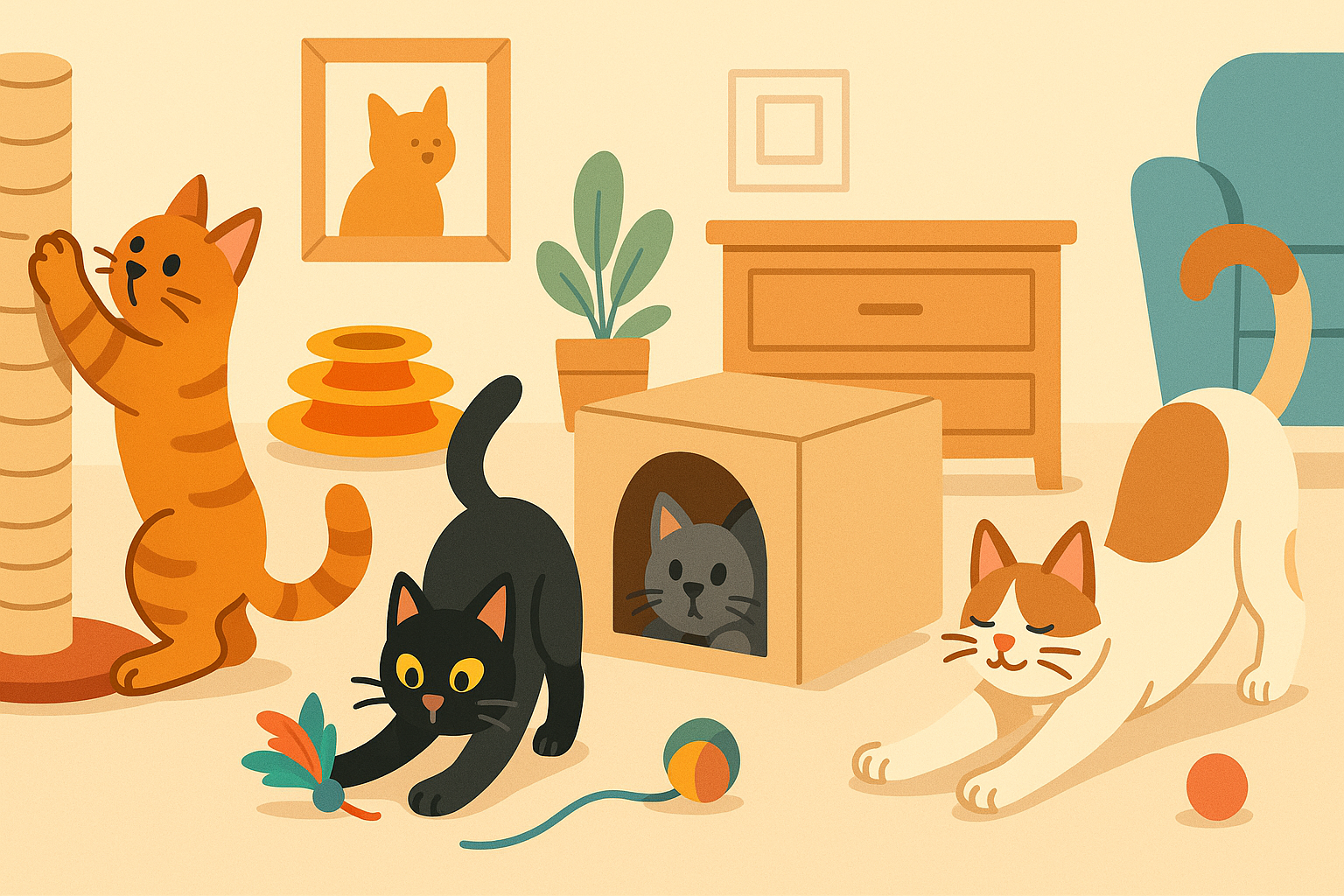Natural Instincts Behind Scratching
Scratching is a natural behavior for cats, rooted in their instincts. It’s not just about sharpening claws—cats scratch to mark territory, stretch their muscles, and relieve stress. At Friends With Tail, we know scratching can frustrate owners, but understanding why cats do it is the first step to finding cat scratching solutions. By addressing this behavior, you can protect your furniture and keep your cat content.
Scratching leaves visual and scent marks from glands in a cat’s paws, signaling their presence to other animals. It also helps shed old claw sheaths, keeping claws healthy. Stretching during scratching maintains flexibility, especially in the back and shoulders. Recognizing these instincts helps you redirect scratching to appropriate surfaces, preserving your home while respecting your cat’s needs.
Common Triggers for Scratching
Cats don’t scratch furniture randomly—specific triggers often prompt this behavior. Identifying them helps you manage it effectively:
- Boredom or Lack of Stimulation: Cats with little to do may scratch to burn energy. This is common in indoor cats without enough playtime.
- Stress or Anxiety: Changes like new pets, moving, or loud noises can lead to scratching as a stress reliever.
- Territory Marking: Cats may scratch prominent areas, like sofas, to claim their space, especially in multi-pet homes.
- Inadequate Scratching Surfaces: If scratching posts are unstable or unappealing, cats turn to furniture.
- Habit or Preference: Some cats prefer certain textures, like fabric, over posts. They may scratch out of habit if not redirected early.
Observe when and where your cat scratches. Note if it happens after specific events, like guests visiting, to pinpoint triggers. This insight guides your approach to redirecting the behavior.
Providing Scratching Posts
Offering appealing scratching posts is key to saving your furniture. Here’s how to choose and use them:
- Choose the Right Material: Cats prefer sisal, cardboard, or wood. Test different textures to see what your cat likes.
- Ensure Stability: A wobbly post scares cats. Pick a sturdy, heavy-based post that won’t tip over.
- Vary Heights and Angles: Tall posts let cats stretch fully, while horizontal scratchers suit cats who prefer flat surfaces.
- Place Strategically: Put posts near furniture your cat scratches or in high-traffic areas, like near their bed or litter box.
- Make It Enticing: Rub catnip on the post or dangle toys to attract your cat. Reward them with treats for using it.
Multiple posts in different rooms give your cat options, increasing the chance they’ll choose them over furniture. For grooming tips that complement scratching solutions, check out related articles.
Redirecting Scratching Behavior
Training your cat to use scratching posts takes patience and consistency. Follow these steps:
- Interrupt Gently: If you catch your cat scratching furniture, clap or say “no” softly. Avoid yelling—it can stress them.
- Guide to the Post: Lead them to the scratching post with a toy or treat. Praise or reward them when they use it.
- Cover Furniture: Use double-sided tape or plastic covers on furniture to deter scratching. Cats dislike sticky or slick surfaces.
- Reinforce Good Behavior: Reward your cat every time they use the post, especially early on. Treats or praise build positive habits.
- Trim Claws Regularly: Keep claws short to reduce damage. Use pet-safe clippers and reward your cat to make it stress-free.
Consistency is crucial. Redirect every time you see scratching and reward post use. Over time, your cat will prefer the post. If progress is slow, reassess post placement or type.
Maintaining a Scratch-Free Home
Long-term success requires ongoing effort to keep your home scratch-free. Here’s how:
- Provide Enrichment: Toys, climbing trees, and playtime reduce boredom, lowering the urge to scratch.
- Manage Stress: Create a calm environment with hiding spots and routine. Address changes gradually to minimize anxiety.
- Check Posts Regularly: Replace worn posts to keep them appealing. A frayed post is less inviting than furniture.
- Protect Furniture: Use slipcovers or furniture protectors for extra safety, especially for new or valuable items.
- Monitor Behavior: Watch for new scratching triggers, like a new pet, and address them promptly with posts or training.
By combining redirection, enrichment, and prevention, you’ll maintain a happy cat and a pristine home. For more feline habits advice, visit Friends With Tail.
Final Thoughts
Scratching is a natural cat behavior, but with the right approach, you can redirect it away from your furniture. Understand your cat’s instincts, identify triggers, and provide appealing posts to meet their needs. Consistent training and a stimulating environment ensure long-term success. Your home can stay scratch-free while your cat stays happy and healthy. Share your scratching solutions or questions in the comments, or explore more tips to create a harmonious home with your cat!

